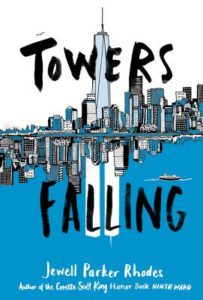LA Biscay is one of those people who loves to analyze structure and I love her for doing it. Since I’m heavy into revision mode right now on my own work-in-progress, I’ve revisited this particular post multiple times to help me think more strategically about my own first lines. May it help you think more strategically too! ~ Kristi
craft review by LA Biscay
In his craft book Plot and Structure, author James Scott Bell challenges writers to find the strongest hook for scene openers:
“The hook is what grabs the reader’s attention from the start and gets him pulled into the narrative. And here is where many a writer stumbles.
“Feeling there needs to be an adequate description of the location first, then the characters, a writer may tend to start his scenes slowly. This is, of course, a logical choice. We think in a linear fashion, and figure we have to get the readers seeing the location, then the characters in the location, before we can get to the good stuff, like action and dialogue.
“Don’t fall into this trap.” (p.121)
I would modify by saying—don’t fall into this trap every time. Some scenes can begin with Description, and Bell goes on to showcase examples of riveting descriptive openers. However, for reasons of pacing, intensity, and plain old variety, some scenes should start in a non-linear fashion.
On the recent anniversary of 9/11, our Middle Grade Lunch Break (in-person discussion) group studied Towers Falling by award-wining author Jewell Parker Rhodes. The story follows 5th grader Dèja, who first learns about the terrorist attack on the World Trade Center through a school project. Dèja was born after 2001, and she is unaware of her family’s connection to the tragedy. By the end of the story, she understands that history is alive, and history matters. I appreciate the efforts of Rhodes to create a work of fiction that helps younger generations understand the enormity of that September day. Even though it is a difficult topic, I enjoyed reading and studying Towers Falling.
Among many techniques, I discovered Rhodes varies the type of opening lines she uses. After analyzing the first sentence in 26 of the 28 chapters (the final two chapters aren’t written as “scenes,”) I cataloged each into five categories.
Description—Setting: 5 chapters
The chapter entitled The Talk (p. 205) opens with Description of Setting:
“The shelter room is a mess. Beds unmade. Our clothes in boxes. Ray’s and Leda’s few toys abandoned on the floor. It’s a wonder how five of us live here.”
The Talk is the climactic scene of the novel. Here, Dèja finally understands what happened to her father on 9-11 and how the chain reaction of those circumstances resulted in her family being homeless. By opening this chapter in a linear fashion with Description of Setting, Rhodes reinforces Dèja’s challenging living situation. And in a full circle approach, it is also the same setting with which the book opens.
Description—(Secondary) Characters: 2 chapters
The chapter entitled Miss Garcia (p.10) opens with Description of (Secondary) Character:
“She’s short, not much bigger than me. Her hair is curly black, her lips bright red, and she wears high heels. They click-click as she comes into the room, smiling, looking like a Barbie doll. At my old school, Mrs. Baker wore tennis shoes, sat, always complaining about how her feet hurt ‘teaching, running after you kids.’ I never saw her run once.”
In this example, Dèja describes her new teacher. Note the name “Miss Garcia” isn’t included, because the chapter title serves as a clue to whom Dèja is describing. Also note the two comparisons, both of which help bring the picture of Miss Garcia to life: she’s not much bigger than a 5th grader, and she has enough energy to sport high heels all day long.
Dialogue: 3 Chapters
The chapter entitled Recent Past, Far Past (p.75) opens with Dialogue:
“’It’s not fair,’ I holler. “At Ben’s, we’re going to do schoolwork. I can’t babysit Ray and Leda, too.’
‘You want your father to get better, don’t you?’
‘He’s always ruining my life.’
‘Dèja!’ Ma looks fierce. ‘Apologize.’
‘I’m sorry.’”
This chapter starts in the middle of a conversation between Dèja and her mom. Rhodes could have opened this scene with a description of the room, what mom was wearing and how her shoulders sagged as she said, “You have to babysit your siblings on Saturday so I can go to my waitressing job.” Instead, Rhodes skips to the middle of the conversation, and through the subsequent dialogue,
we understand exactly what’s happening.
Action: 9 Chapters
Bell writes, “another hook is action, pure and simple.” (p.121) Based on first lines in Towers Falling that involved physical movement, such as “Pop groans” (p.1) and “I open my locker” (p.163), I created the Action category. In the chapter entitled Homeroom (p.5), Rhodes skips any description of setting or who is in the scene:
“I quickly open the door. My mouth is pressed tight, mean. Arms crossed, I look around, daring anyone to disrespect me. But nobody’s paying attention to me. Everyone’s giggling, meeting up with friends.”
In this example, Rhodes begins with a physical movement, taking us directly into the scene. Because she follows up with Dèja’s emotional state (and because of the chapter title), we understand where Dèja is and what’s happening, without the need for setting description.
The final seven chapters of Towers Falling do not fit into any of the Description or Action (physical/dialogue) categories. Rather, I would assign them to an Interiority category. (If you need a refresher on Interiority, see this post.)
Interiority: Emotion/Thought: 7 Chapters
The chapter entitled Principal’s Office (p.53) opens with Emotion:
“I’m scared.
In the office, nice ladies type on computers, asking if I want water. I don’t want anything except not to be here.”
Regardless of the show-don’t-tell rule, this example highlights how Rhodes skips past the set-up action of Dèja walking to the Principal’s Office, asking where to go, and being told to take a seat. Rhodes jumps to Dèja’s emotional state. I think “telling” works in this opener. Immediately, we understand how vulnerable Dèja feels. It also follows a non-linear pattern by focusing on emotion before setting.
The chapter entitled Friday (p.27) opens with Thought:
“School is like school, except it’s harder. It’s only been four days, and my mind is already stuffed.”
Rhodes begins with Deja’s thoughts about her new school. She also incorporates a nice time transition. In this chapter, Rhodes continues with several lines of description about what is happening in school, giving this scene a reflective, rather than active, opening. While active scenes can open with Thought, a reflection opener contributes to the variety.
Conclusion
Studying the first lines of each chapter in Towers Falling inspired me to do the same with other books in other genres. I discovered that some great “action” scenes open with Thought or Emotion, before cutting to Action. It’s challenged me rethink what “starting scenes in action” means. “In action” doesn’t necessitate opening with a line of physical action or dialogue. And Descriptive openers aren’t always a no-no. Variety is the key.
Action: Examine the chapters of your work in progress. Categorize each one and list them. Do you have a variety of openings? Do the openings match the purpose and content of the chapters? Try a few different ways of opening the same chapter and find which one is most effective.
LA Biscay writes children’s books and dances everyday, if only down the hall. As a teacher of Creative Movement, she enjoys assembling basic dance elements into unique combinations. It’s probably why she’s a fan of story structure! LA is an active member of SCBWI. She lives in the San Francisco Bay Area with her husband, children, super dog, and a brood of chickens that lay green eggs. Yep. Green eggs.




COMMENTs:
0